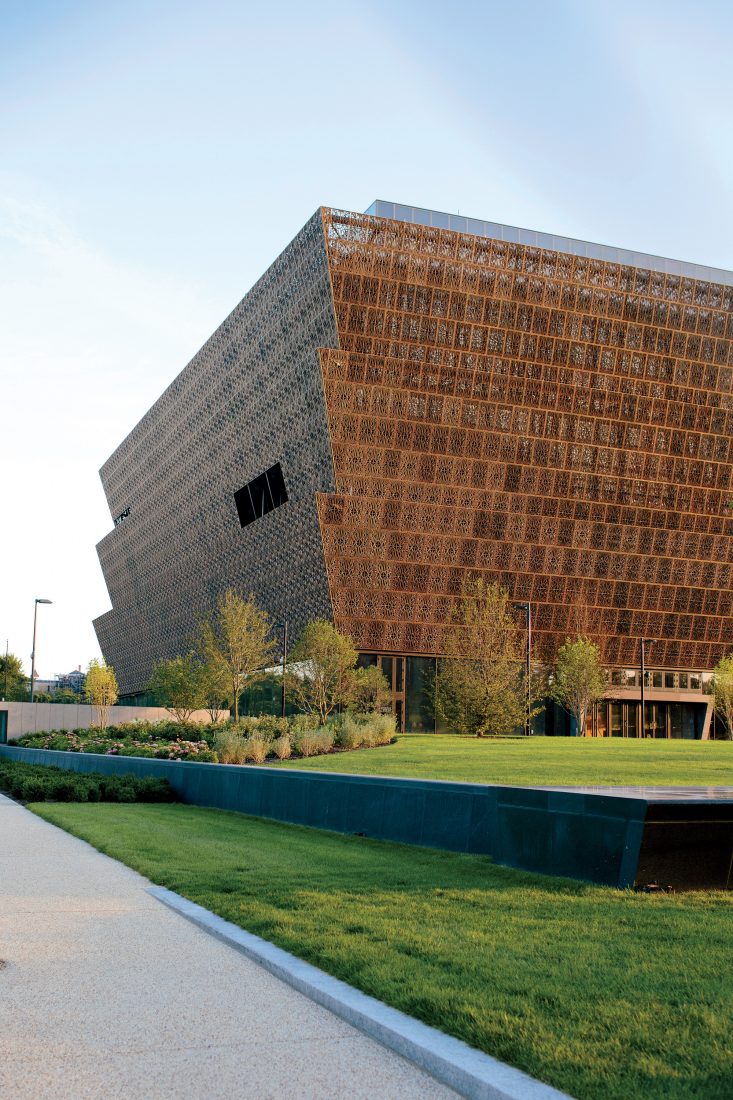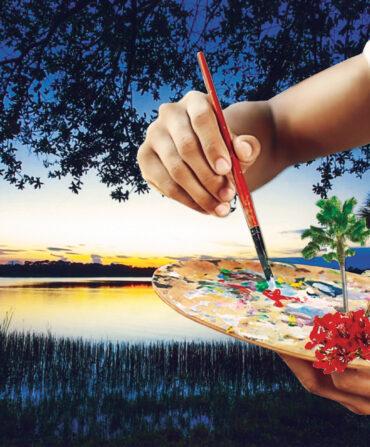A museum, by definition, is where people look at objects. But at the Smithsonian’s new National Museum of African American History and Culture, you’ll sometimes need to look twice.
One of the most striking pieces featured in the museum’s central exhibit, Slavery and Freedom, is a scrubby pinewood cabin that the Smithsonian broke down and carried as a bundle of boards from the Point of Pines Plantation on South Carolina’s Edisto Island to Washington, D.C. Museum visitors first confront the reassembled 1853 structure after they’ve passed by a cotton gin, as a place where enslaved African Americans lived.

Photo: National Museum of African American History and Culture
A dress sewn by Rosa Parks
Later in the exhibit, visitors again encounter the cabin but from a different vantage point. This time, it’s within the context of freedom. Black South Carolinians inhabited it until the 1980s, and the museum has dutifully preserved the improvements they made to the building after Emancipation, including layering wallpaper over its uninsulated walls and adding another door. “With enslavement, cabins were never fully safe,” says Nancy Bercaw, one of the curators. “There was no back door, meaning people had to enter and leave in the same direction. This was about surveillance and sexual assault. So the first thing people did after slavery was build a back door.”
Slavery and Freedom is one of eleven inaugural exhibits in the 400,000-square-foot museum. The full collection numbers more than thirty thousand objects, ranging from a prison guard tower from the Louisiana State Penitentiary in Angola to Muhammad Ali’s headgear to an orange silk jacket and black velvet skirt that the singer Marian Anderson wore in 1939 when, after being barred from performing at Constitution Hall because of her race, she stood on the steps of the Lincoln Memorial and sang “My Country, ’Tis of Thee.”

Photo: National Museum of African American History and Culture
Muhammad Ali’s headgear
The notion of devoting a national museum to the African American experience dates back a century. But the dream started its current march to reality with the passage of a bill in 2003, following years of efforts by the Georgia congressman John Lewis. In 2006, the Smithsonian Board of Regents selected the site on the National Mall, between the National Museum of American History and the Washington Monument.
Once green-lighted, it remained what museum officials described after its 2012 groundbreaking as “one of the largest and most complex building projects underway in the country.” More than half of the structure, designed by David Adjaye, is underground; aboveground, it incorporates a set of tiers alluding to a traditional Yoruban column. Ironwork created by enslaved craftsmen in New Orleans inspired the patterned panels along the outer walls.

Photo: National Museum of African American History and Culture
A 1963 photo of the national headquarters of the March on Washington, in Harlem
Among the objects that haunt Bercaw are Harriet Tubman’s shawl and a small tin box in which a man named Joseph Trammell kept his freedom papers. And she believes material things can help facilitate discussions about slavery and its legacy. “People can speak more easily about an object and their memories of an object,” she says.
On Edisto, black and white residents joined together in 2013 to help prepare the cabin for its trip north and share stories about its past. The project took an entire week, and at the end, an African American man told Bercaw, “I believe the multitudes are with us today.”








